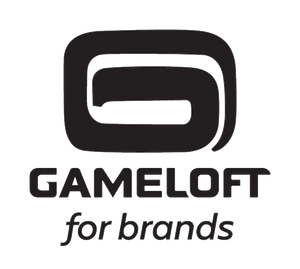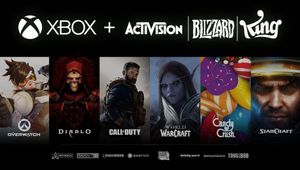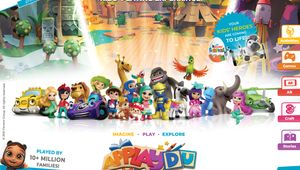
In-Game: The Brand-Safe Advertising Channel

There are still misconceptions that the mobile gaming audience is too small and niche to be of real value to brands, its players perceived as young, with little disposable income and no interests beyond playing games.
Look at the facts, however, and a very different picture emerges. According to Newzoo, 2.7bn people around the world now play games on their phone each year. In fact, according to AdColony’s ‘The Modern Mobile Gamer’ report, half of US adults play mobile games daily. The same report reveals that gamers are well educated, with 51 per cent of consumers that have Master’s degrees playing mobile games once or several times a day. Sixty-five per cent of respondents with an income of over $250,000 (£189,000) play mobile games at least once a day; and they are committed to the games they play. According to a 2019 Tapjoy study, 69 per cent of US consumers said they would rather give up social media apps or TV than lose their favourite mobile games.
Games are now the most popular entertainment medium. Last year, before the pandemic impacted the theatre industry, games generated more revenue worldwide than theatrical entertainment and music combined. As Microsoft CEO Satya Nadella said in announcing the firm’s $7.5bn acquisition of ZeniMax Media, parent company of game developer Bethesda, in September: “Gaming is the most expansive category in the entertainment industry, as people everywhere turn to gaming to connect, socialise and play with their friends”.
Games are also uniquely interactive, as the player is immersed, taking part as a character in a story rather than watching passively. This allows for a new level of brand engagement when the brand is also part of the experience, either by offering rewards that help the player progress in their game, or through native integration into the gaming environment itself with placements, sponsorships, branded skins and other custom content.
Brand safety
An AdColony study found that Gaming apps rank higher than social media platforms in providing a brand-safe environment for advertisers. Sixty% of respondents said they see offensive content on Facebook, compared with 31% on YouTube and only 18% on mobile games. There’s no fold either, guaranteeing 100% viewability in a way that few, if any other channels can.
For all these reasons, forward-thinking brands willing to look at in-game advertising on its own merits have started to come to the mobile gaming party. But how are their ads received? How do these committed, highly-engaged gamers feel when their gaming experience is interrupted by an ad? In fact, when the timing and format of the ad are done right, in-game ads are seen as helpful, enhancing the game or simply part of the transaction to play free games. Gamers appreciate that if they don’t pay for the game, it has to be funded somehow, and they are particularly keen on open, transparent, value exchange advertising where the user gets another life or moves up a level, in return for engaging with a brand’s ad. Users’ attitude towards ads they agreed to watch is a lot better than towards those that interrupt them while they are trying to do something else. And a WARC article, ‘Marketing to gamers’, stated that gamers’ attitudes toward brands and marketing reveal a surprising amount of openness to brands, provided they reflect shared values and recognise what makes the community unique.
Gamers also pay attention to ads in games. A Tapjoy study found that gamers are more than twice as likely to pay attention to advertisements placed in mobile games (41%) than ads on the internet (17%), in magazines (15%) or on billboards (15%).
Of course, it’s one thing to say that in-game is a brand-safe environment, but brands still need to ensure they work with the right partner in order to satisfy themselves that their gaming environment is as brand-safe as they claim it to be.
When choosing a partner, it’s always a good idea to play their games yourself, for a number of reasons. Firstly, to make sure that they meet your standards for quality. Secondly, to get first-hand experience with their advertising ecosystem and the ads being served. And thirdly, to validate that they are compliant with GDPR (General Data protection Regulation) and COPPA (Children’s Online Privacy Protection Rule) regulations. One clue is an age gate or a screen that requires you to input your age before allowing you to proceed. This is an indication that the in-game partner is using the age associated to their players to make sure they’re not serving them inappropriate content, but it’s best to get clear confirmation on their ads policy. By playing the games, you’ll get a feel for their approach to advertising, and can make sure that the game itself doesn’t have elements of violence or adult content that would not fit with your brand. You should also request a “block list” of advertisers or types of services that the partner will not allow within their games, along with a very comprehensive explanation of their brand safety policies.
At Gameloft, we take our responsibilities very seriously. In September, we were awarded the TAG Certified Against Fraud Seal by the Trustworthy Accountability Group (TAG). The Certified Against Fraud Program is the cornerstone of TAG’s efforts to combat fraudulent and invalid traffic and a key part of the world’s leading program to fight criminal activity and protect brand safety in digital advertising.
Brand fit
Finally, alongside brand safety, you should also give some thought to brand fit to ensure that the ads you serve in games are as native as they can be, and a good fit for the environment in which they’re served.
We are, first and foremost, a game publisher serving our audience of gamers, therefore we recognise the importance of context. We work closely with our games teams to ensure fit and build restrictions when required. For a major children’s entertainment company, for example, we ensure that their games will never feature ads for unhealthy food. At the other end of the spectrum, we work closely with brands like Michelin to create wholly native ad units in our Asphalt racing game series.
This attention to detail is one of the reasons why some of the world’s biggest and best-known brands choose Gameloft as their in-game partner.
- Casey Campbell, managing director, North America at Gameloft
Originally published in Mobile Marketing Magazine













